Series 1: PSLV Successfully Launched Ten Satellites
- SEEDS 2, Nihon University, Japan-
On April 28, 2008, the Indian Space Research Organisation (ISRO)'s Polar Satellite Launch Vehicle (PSLV-C9) successfully launched the remote sensing satellite CARTOSAT-2A, IMS-1z (mini satellite), and eight nanosatellites for international customers.
Nihon University has been developing a nanosatellite since 2001 to give people practical education regarding space engineering, and in September 2004 it completed making CubeSat, SEEDS (Space Engineering EDucation Satellite), a 10-cm cube that weighs 1 kg.
The main missions of SEEDS are to:
- Verify the fundamental functions of the satellite.
- Analyze the internal status and attitude of the satellite by using Morse code and packet communication.
- Please amateur radio operators all over the world by sending voice data (converted from voices and images recorded on the ground) from space, as an amateur satellite with a downlink of 437.485 MHz (amateur radio band).
SEEDS was launched by the Russian rocket "Dnepr-7" on July 27, 2006 from the Baikonur Cosmodrome in the Republic of Kazakhstan, but unfortunately it was lost because of problems with the rocket's engine.
Undaunted by this failure, we developed SEEDS 2 to once again try to put a satellite into space that carried the wishes of many people.
ISRO's Polar Satellite Launch Vehicle, PSLV-C9, successfully launched the 690-kg Indian remote-sensing satellite CARTOSAT-2A, the 83-kg Indian Mini Satellite (IMS-1) and eight nanosatellites for international customers (from six countries, including SEEDS 2 from Japan) at 12:53:51 (Japan time) on April 8, 2008 from Satish Dhawan Space Centre (SDSC) in the south of India, and all 10 satellites were safely injected into their scheduled orbits.
SEEDS 2 is at present undergoing initial operations and we are receiving data about its internal status (such as its internal temperature, battery power, and current values generated from both sides of its solar cells) and sensing data (from the three gyrosensors (xyz) and the three geomagnetism sensors (xyz) of the satellite), in cooperation with amateur radio operators all over the world.
And at the same time, the voices and images it is transmitting to the ground are being favorably received.
From now on, we plan to analyze the data about the satellite's internal status and the sensing data it has collected.
And we are now developing the next nanosatellite, "SPROUT," by applying the technology and know-how about satellite development that we acquired through the development of SEEDS.
SPROUT's main mission is to be useful in the field of amateur radio and to perform engineering verifications regarding the deployment of flexible structures in space.
We are aiming to verify a technology for a technique that does not produce any debris and in which, by deploying a flexible structure, we can increase a satellite's air resistance and thereby lower its orbit.
We strongly feel that we owe this successful launch of SEEDS to the encouragement and support of many related persons from various organizations such as UTIAS/SFL (University of Toronto Institute for Aerospace Studies, Space Flight Laboratory), the Tokyo Institute of Technology, UNISEC (University of Space Engineering Consortium), JARL (the Japan Amateur Radio League JAMSAT (the Japan Amateur Satellite Association Board), AMSAT (Radio Amateur Satellite Cooperation), the Indian government, ISRO and the government office concerned in Japan.
Finally, we heartily appreciate your very kind cooperation.
Nihon University CubeSat Project Official Website:
http://cubesat.aero.cst.nihon-u.ac.jp/english/index.html

- Fig .1: CubeSat SEEDS
(10 cm ?? 10 cm ?? 10 cm, 1 kg)
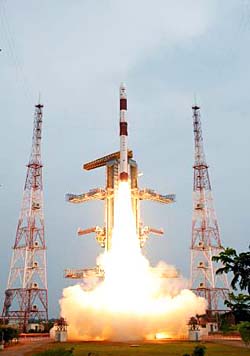
- Fig. 4: PSLV-C9
(photo by ISRO)
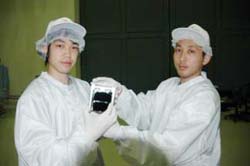
- Fig. 2: Commemorative
photo with SEEDS taken at SDSC
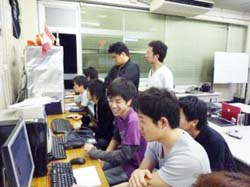
- Fig. 5: Satellite operations being conducted
at the ground station of Nihon University
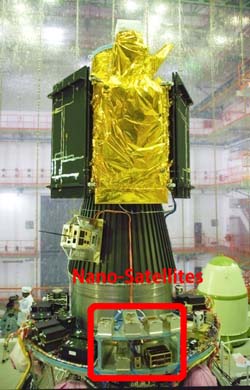
- Fig. 3: Main satellite and nanosatellites
(photo by ISRO)
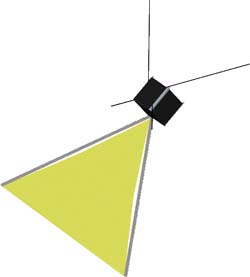
- Fig. 6: The next nanosatellite "SPROUT"